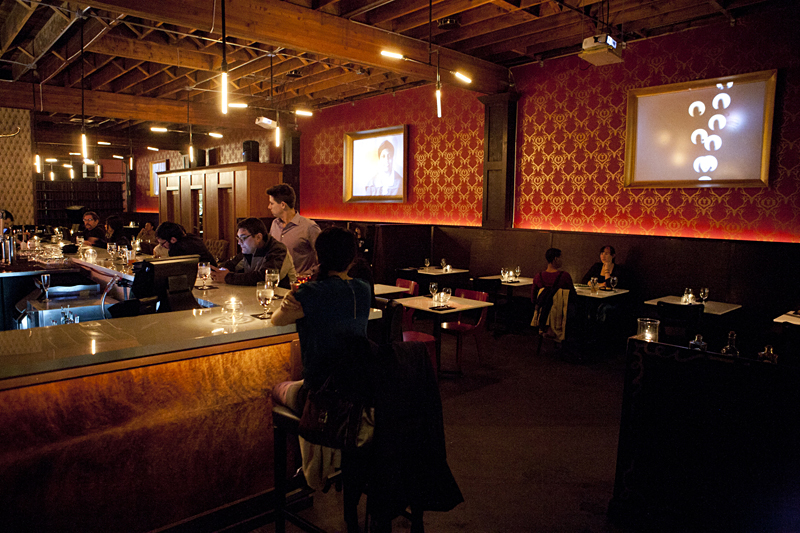The very first edition of the Boy Scout Handbook, issued in 1911, spelled out all the skills needed to “be prepared.” It advised that a boy who meant to distinguish himself in scouting should be able to construct makeshift rafts and bridges, identify trees by their bark, and subdue runaway horses. A Scout is charged with averting dangers trifling and tragic, the guide explained, so he ought to be equally capable of removing a stray banana peel from the sidewalk and resuscitating the victim of a poison-gas attack.
And, finally, the boy needs to know how to bake a potato.
The Boy Scout–endorsed method of rendering a meal from a raw tater involves washing, drying, and burying the potato in a deep bed of coals. After 40 minutes—which an enterprising Scout might spend rescuing people from burning buildings or weaving a mattress on his loom—supper’s served. Any grubby 12-year-old can do it.
If there were an official handbook for steakhouses, the baked potato would probably have a prominent place in it too. And there’s no way Manhattan Drugs would be earning its badge. The new Capitol Hill restaurant—the one with the high prices and the mounted ram’s head sporting a pair of shiny M16 rifles on the ends of its twisty horns—seems content to woo customers with novelty and let its basic duties slide. Like many of the dishes at Manhattan Drugs, the debacle presented as a baked potato is too conceptually conservative to pass as a gutsy riff on steakhouse traditions and too inept to count as a competitor to the analogues served at established beef palaces down the hill.
To make its baked potato, Manhattan Drugs hollows out a potato and blends its innards with a modicum of butter, sour cream, and chives. The resulting nubbins are then returned to the hard-baked shell, like parched pebbles in a dry creek bed. Both times I tried the flavorless potato, it was served at what might be considered room temperature if a large man was controlling the thermostat.
When I first asked about the preparation, my server told me the kitchen hadn’t been able to figure out how to bake potatoes all the way through without first disassembling them. I later learned from general manager Corey St. John—who co-owns the restaurant with Laura Olson, the force behind Po Dog and the forthcoming Queen of Norway—that Manhattan Drugs had other reasons for adopting its split-and-fill method. “We can totally do a whole baked potato,” he said. “We switched because the whole potato was rolling around the plate. And we didn’t want to do a potato in foil.”
Still, the server’s presumption of incompetence was telling. The kitchen consistently makes elementary mistakes that would provoke sighs and shrugs if the centerpiece steaks cost $20. With most of Manhattan Drugs’ steaks selling for nearly twice that, it’s probably best the knives are cleared before the checks arrive.
Manhattan Drugs, which borrowed its name from a half-century-old Normandy Park pharmacy that promised “big-city selection and small-town service” until its 2009 closure, has the opulent-brothel look of an urban steakhouse. Like a Metropolitan Grill for the biodiesel generation, the restaurant is furnished with hulking wooden booths, upholstered leather chairs, and light fixtures fashioned from pipes. The vintage back bar and a server sideboard were salvaged from a drug store, but the room’s most striking elements are brand-new, including the slick white tables and bar top and the wallpaper, red as papal slippers, imprinted with a gold pattern based on the gun-toting white ram. More than 600 black-and-white photographs of butcher shops and tenements cycle on a pair of projection screens opposite the bar.
The restaurant appears to be popular with Capitol Hill residents who need somewhere to take their parents, although cross-generational communing is complicated by the soundtrack’s volume. “The music is louder,” St. John says, explaining why “we’re not getting the classic steakhouse crowd you would expect to see.”
If steakhouse vets visited Manhattan Drugs, they’d find a very familiar menu. Although St. John says “doing the sea bass was definitely edgy,” most of the dishes aren’t getting anywhere near that edge. In addition to the fish and four prime Nebraska steaks, the restaurant serves trout, chicken, pork tenderloin, and a wild-mushroom risotto which might satisfy vegetarians if it didn’t have shrimp in it. To start, there’s shrimp cocktail, crab cakes, beef carpaccio, steak bites, and beef sliders, intended perhaps for cocktail drinkers who come to gape at the decor and end up feeling carnivorous.
The restaurant also makes its own popcorn shrimp, although it’s not clear why. The batter on the shrimp is correctly crisped, if a tad greasy, but the shrimp are watery plugs of nothingness. An accompanying waxy honey-mustard dressing that really should be in a relationship with a different appetizer doesn’t help much.
At Manhattan Drugs, crab cakes aren’t as complex as the term typically implies: The kumquat-sized pucks of Dungeness crab meat are mostly uninterrupted by breadcrumbs, onions, or seasoning. “There’s a lot of crab in each cake,” St. John confirms. Unfortunately, the croquette’s bound up in a tourniquet of greasy fry, although the blood-orange segment pinned to each cake is a pretty touch.
The standardized soup and salad selections include a bland Caesar; a wedge salad crowned with two strips of tasty candied bacon and blasted with way too much dressing; and French onion soup, showcasing a fat whole-wheat crouton topped with unevenly melted cheese. Customers foregoing a first course will surely appreciate Manhattan Drugs’ bread generosity: The restaurant recently rescinded its airy yeast rolls (probably a wise idea) and now serves a sugary cornbread in a cast-iron pan. While the bread has a tendency to disintegrate into flaxen confetti, there’s plenty of it.
The cornbread is supposed to be served with a jalapeño butter, but our server didn’t provide it. At Manhattan Drugs, servers are apparently sworn isolationists, never interfering to ask if anything’s needed or apologize for kitchen errors. They’re also very slow.
So how’s the steak? The filet’s lifeless, but the strip and rib-eye are threaded with fat, and both were cooked as requested. I only wish chef Khampaeng Panyathong, a veteran of Spring Hill (now Ma’Ono), didn’t encrust the meat with so much salty seasoning, which overwhelms the already partially muted beefiness of the corn-fed steaks. Sadly, the steaks just don’t have the verve to keep up with some of the big reds on the restaurant’s admirably Washington-heavy wine list.
Even when the steaks are properly grilled, side dishes are a distraction: Asparagus is saturated with artificial-tasting liquid smoke, and mashed potatoes are unappealingly drippy, like an Irish congee. And then there’s that godforsaken baked potato. No matter how it’s decorated, a steakhouse really needs to know how to bake a potato.
Price Guide
Popcorn shrimp $10
French onion soup $7
Wedge salad $8
New York strip $38
Filet $45
Rib-eye $35








